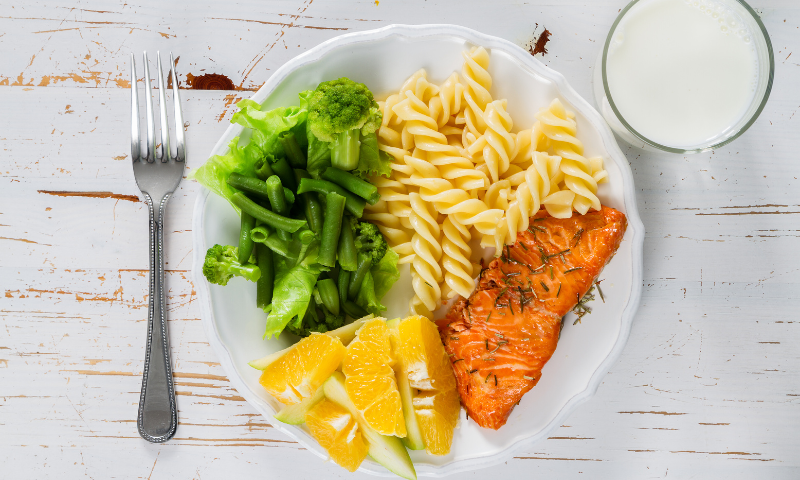Developing healthy habits with portion control is crucial for anyone seeking to manage their weight, improve their health and conquer emotional eating. When it comes to weight-loss, what you eat is important, but how much you eat plays an equally significant role.
By understanding and implementing effective portion control techniques, you can achieve your weight-loss goals without feeling deprived or overwhelmed. Here are three simple portion control techniques you can start using today without any complicated tools or measuring devices.
Portion Control Techniques
Divide and Conquer
One effective portion control technique is the “divide and conquer” method, which can be easily practiced anywhere. To begin, examine your plate and divide it in half. The top half should be dedicated to vegetables or a combination of fruits and vegetables, ensuring a generous serving of plant-based nutrients. The bottom half of the plate should be further divided into two sections: one for protein and the other for a complex carbohydrate. This approach guarantees a well-balanced meal with the right proportion of essential nutrients. Whether you’re dining out or enjoying a meal at home, this trick can be easily applied to any menu.
Here are some helpful tips to apply the “Divide and Conquer” method:
- Enhance your lunches or dinners by including a side salad or a medley of vegetables.
- Opt for whole grains such as quinoa or brown rice instead of refined grains like white rice or pasta.
- Accompany your protein dish with a side of roasted sweet potatoes or carrots for added nutritional value.
Use Smaller Plates
Believe it or not, the size of your plate can significantly influence your portion control habits. Using a smaller plate can create the illusion of a more satisfying meal and trick your mind into feeling full, even with smaller portions. When you combine the strategy of using a smaller plate with the “divide and conquer” technique, you’ll be pleasantly surprised at how easily you can manage your portions without experiencing a sense of deprivation.
Here are some helpful tips to incorporate this practice into your routine:
- Swap out your dinner plate for a salad plate, which naturally holds smaller portions.
- Consider investing in portion control plates or bowls specifically designed to assist in managing portion sizes.
- Use smaller bowls when serving cereal or soup, helping you maintain control over the amount you consume.
Out of Sight, Out of Mind
When it comes to effective portion control, removing the visual presence of food is crucial. A simple way to accomplish this is to keep serving dishes off the table during meals. This makes it more challenging to reach for seconds and reduces the likelihood of mindlessly overeating. Instead, adopt the habit of serving food in the kitchen and only bringing your plate to the dining table. This intentional step encourages mindful eating and allows you to make a conscious decision if you genuinely desire additional servings.
Here are some practical tips to implement this technique:
- Serve food in the kitchen and bring only your plate to the dining table.
- After finishing your meal, promptly store any leftovers in the refrigerator.
- When eating out, ask the waiter to provide a to-go container with your meal and put half of your food away before you start eating.
Conclusion
By incorporating these three simple portion control techniques into your daily routine, you can effectively work toward your weight-loss goals without the need for constant calorie counting or meticulous food weighing. It’s important to keep in mind that small, sustainable changes are key to long-term success.






